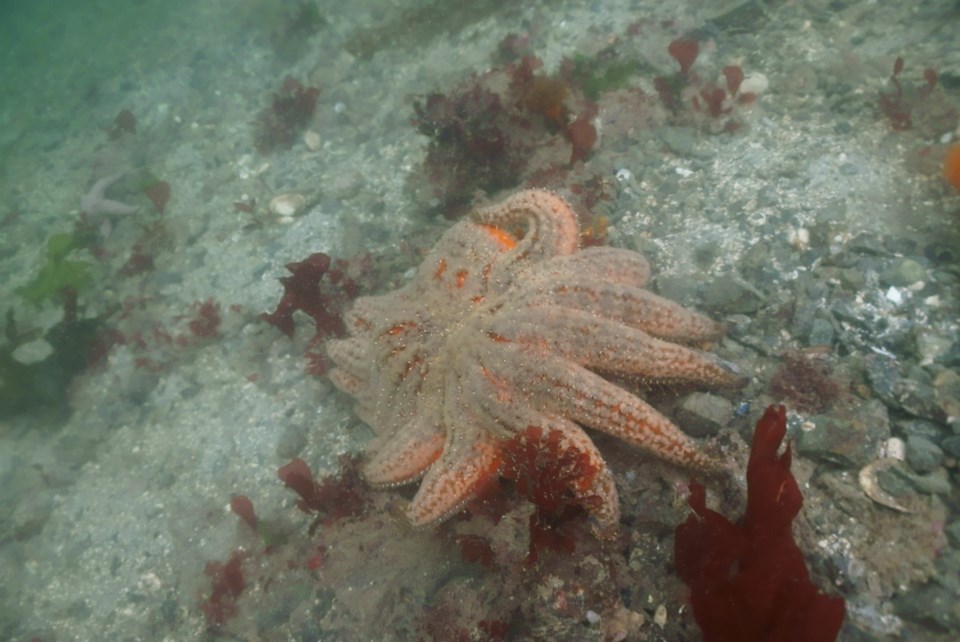Up to 90 per cent of sunflower starfish in parts of Howe Sound have died from an unknown wasting epidemic in the last month and Vancouver Aquarium scientists are trying to solve the mystery.
Donna Gibbs, a research diver and taxonomist with the aquarium, said she got into the water at Bowyer Island and near Porteau Cove in Howe Sound and saw the decimation for herself. Other waters around Vancouver have also been impacted.
"In September, we started getting reports from divers and then we saw it ourselves. The divers were calling us and saying 'what's with all the dead sea stars?'... I got in there and it was spread out and they were just these gooey carcasses and it was 'Ok, something big is going on here,'" Gibbs said.
"It's just amazing to me that there were thousands and now they're just gone. Like a wildfire. It's crazy."
The aquarium's marine diversity blog shows a video of the die-off before and after on Hutt Island, also in Howe Sound, with footage shot of the seabed in May 2012 showing a health mass population of thousands and footage shot of the same spot last month show no starfish at all.
"We thought it might be just the eastern side of the sound at first but then we started seeing it towards Popham Island as well," she said.
"We're monitoring it and trying to find out what is going on. It seems to us that it is probably a disease that just wiped them out... it hits the species in a big way."
They are tracking the epidemic by taking photos of the sunflower stars and other starfish species that have been impacted. The disease has impacted mature sea stars and some juveniles of around a year old. Sea stars live from three to five years.
Healthy quarter-sized baby sunflower starfish have been spotted, Gibbs said, raising hopes of a recovery.
There were so many sunflower stars that the wider ecosystem was being smothered by them.
"There are known diseases for sunflower stars and we think it just hit them in their overabundance and just took off... We suspect it's a known disease, not something weird or freakish. It's just taking off because it can," Gibbs said.
"The situation could actually be healthy, because there were way too many of them. It may leave new room for settlement for new species and maybe the ecosystem will come back to the way it should be. So it's not necessarily bad but the thing is we don't know yet. We're monitoring where we've seen them, where divers have reported it and we're mapping the healthy babies.
Taking a necropsy of the dead starfish to find the disease has not been easy.
"We brought some samples up and the scientists weren't happy with that because they disintegrated... they want five healthy and five diseased. When we went back out there we didn't know where we could find them because the dead ones were disintegrated and healthy ones just aren't there."
Vancouver Aquarium veterinarians have been in discussion with their counterparts around the world to find out more about the collapses of such starfish colonies but Gibbs said they wanted to gather and log their information before they collaborate with other scientists "so we can talk the same talk."
"We're trying to figure out what's really going on. We're getting so much interest, with people talking about the Tsunami and (nuclear reactor meltdown at) Fukushima and people saying 'it's radiation.' And that the thing. It could be any number of reasons, so we're not making any definitive statements," Gibbs said.
She added that they did not know yet if the species was at risk.
"I hope not. We're going to really watch the babies and how they come back and the healthy ones. We're going to track all of it now," Gibbs said.
"Howe Sound is just coming back into balance again (after a major cleanup in the last decade) and this may be part of it. I don't know."




